Gluten free Italian bread wasn’t always easy to find—or tasty, for that matter. I remember trying to make my first loaf with every hope in the world… only to end up with a dense, sad brick that could’ve doubled as a doorstop. Sound familiar?
But things have changed. Whether you’ve got celiac, gluten sensitivity, or you’re just curious, there’s a whole world of crusty, soft, gluten-free Italian bread waiting to be sliced. From homemade focaccia to store-bought ciabatta that actually tastes like bread, this guide covers it all.
Oh, and if you’re dreaming of sandwiches already, check out these gluten-free sandwich ideas. You’re gonna want ‘em.
Why Gluten Free Italian Bread is Totally Worth It
What Makes Gluten Free Italian Bread So Irresistible?
It’s all about that combo—crusty outside, soft inside. Classic Italian loaves like ciabatta and focaccia are built on wheat flour, giving them their chew and stretch. Gluten-free versions recreate that magic using smart flour swaps like rice, tapioca, or almond flour.
Why Skip the Gluten?
If you’ve got celiac or even mild sensitivity, gluten can wreck your gut. Cutting it out doesn’t mean cutting out flavor. With the right recipe, gluten-free Italian bread can be just as satisfying—trust me, I’ve had some that taste better than the “real” thing.
Bonus: Baking Is Therapy (and Fun)
Playing around with gluten-free dough is weirdly therapeutic. You learn to work with xanthan gum, psyllium husk, and high-moisture doughs—and when it all clicks? Pure joy. It’s like baking science meets old-school comfort. For example, these gluten-free biscuits are proof that going gluten-free doesn’t mean settling.
Popular Gluten Free Italian Bread Recipes You’ll Crave
Classic Gluten-Free Italian Loaf
Think old-school rustic bread—crusty, golden, and perfect for dunking in soup. This loaf uses a blend of rice flour, tapioca starch, and sorghum (or even oat flour). The secret? Adding a bit of xanthan gum and letting it rise in a warm spot for that perfect airy center.
Quick tip: Use a Dutch oven for baking—it traps steam and gives you that epic crust.
Gluten-Free Focaccia (That’s Actually Fluffy)
If you’re after something soft, herby, and snack-worthy, focaccia is your move. This gluten-free version is topped with olive oil, sea salt, and rosemary—sometimes cherry tomatoes or olives if we’re getting fancy. The dough is wetter than usual, but don’t worry—that’s what makes it pillowy.
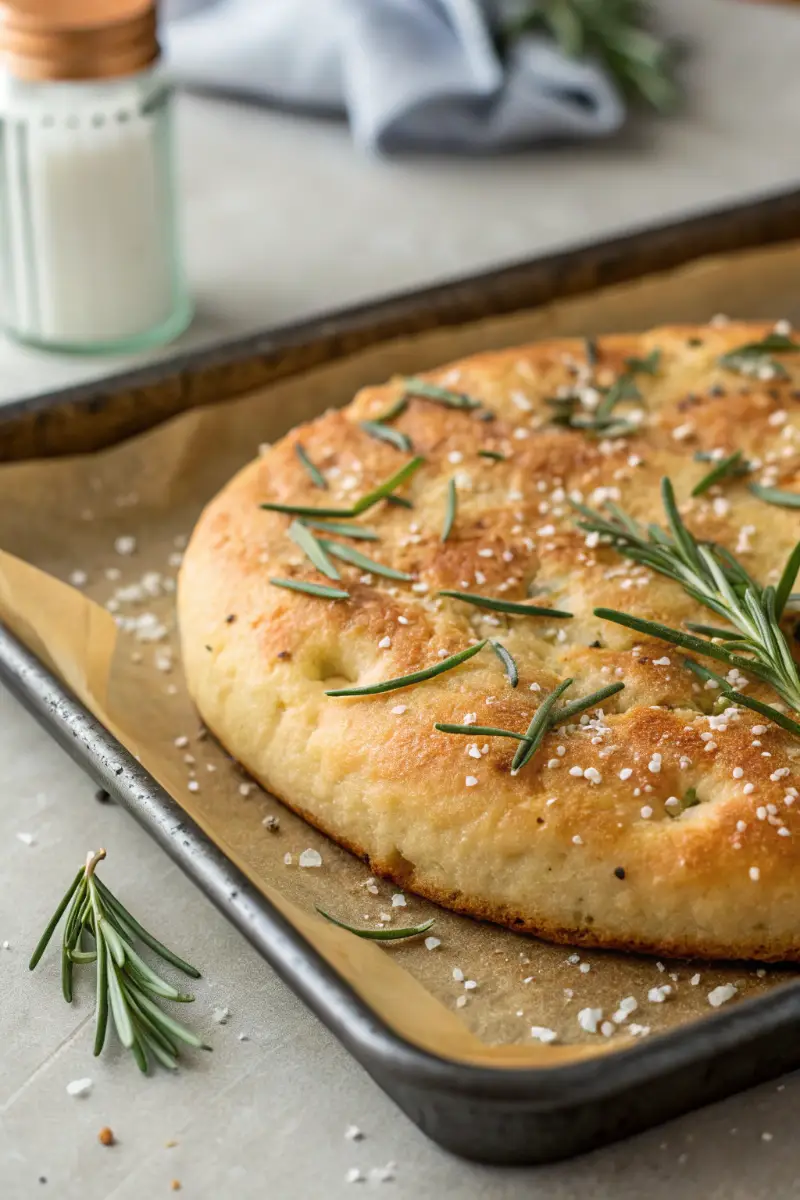
Pro tip: Let it rest in the fridge overnight. It deepens the flavor like magic.
Looking for another Italian classic with a gluten-free twist? Don’t miss our guide to gluten-free lasagna—your focaccia will want a buddy.
Ciabatta-Style Rolls (Yes, It’s Possible)
These bad boys are made for sandwiches. Open crumb, chewy bite, and those rustic dimples on top. Gluten-free ciabatta is tricky, but not impossible. Hydration is key—think sticky, almost batter-like dough. Bake it hot and fast, and you’ll get those signature holes.
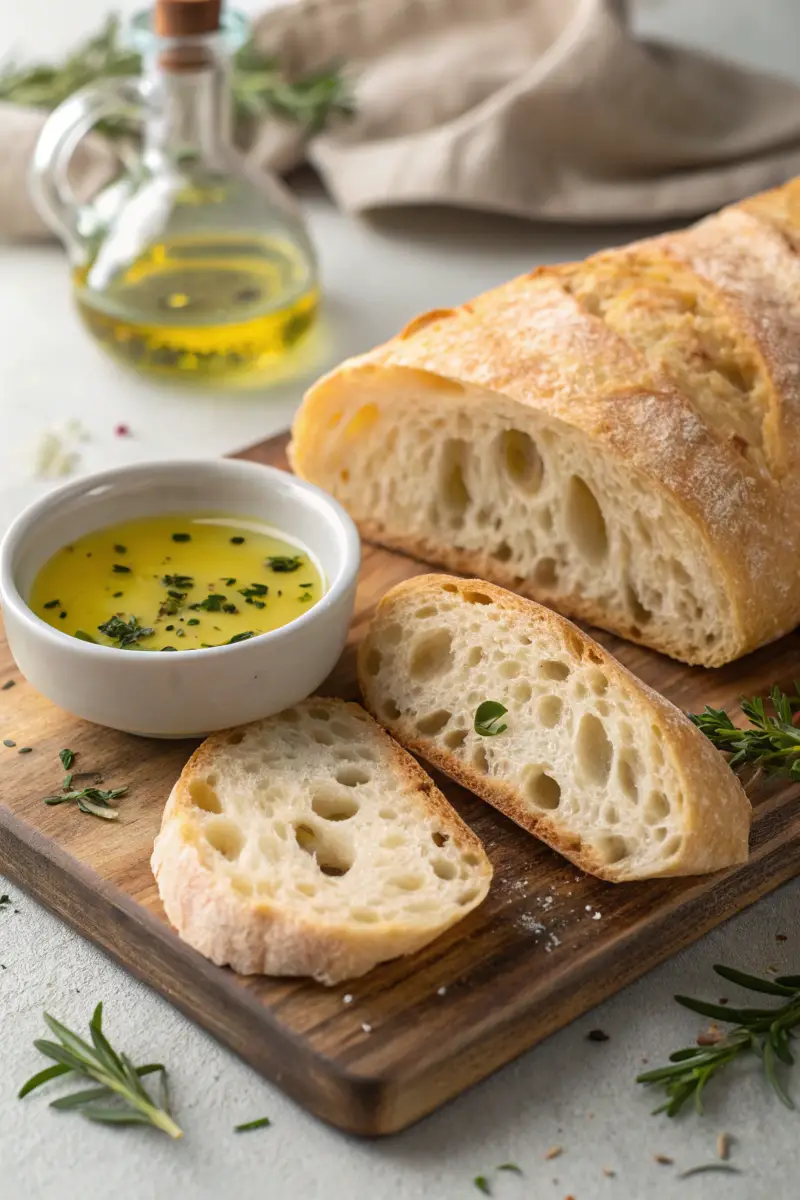
Side note: Toast one of these up with garlic and olive oil? You’ll never go back.
Garlic & Herb Breadsticks
Alright, not a full loaf—but worth it. These breadsticks are soft inside with a crispy outer shell, and they’re packed with Italian seasoning. Kids love ’em, and they’re great with marinara.
Bonus recipe: Try these gluten-free meatballs on the side for the ultimate Italian feast.
Store-Bought Gluten-Free Italian Bread That Don’t Suck
Let’s be honest—most store-bought gluten-free bread tastes like… sadness. But don’t lose hope. There are brands out there doing it right, especially when it comes to Italian-style loaves.
Trader Joe’s Gluten-Free Bread
Trader Joe’s keeps surprising us. Their gluten-free Italian-style white bread has a decent crust and doesn’t crumble the second you slice it. It’s great for garlic bread, bruschetta, or just slathered in butter with a sprinkle of sea salt. Plus, it’s affordable—big win.
Hot tip: Toast it. Seriously. The texture upgrade is wild.
Looking for more gluten-free store swaps? Check out these tasty gluten-free pita chips for snacking inspiration.
Is Ezekiel Bread Gluten-Free?
Short answer? Most aren’t. Ezekiel bread is made from sprouted grains like wheat and barley, which naturally contain gluten. Some folks assume the sprouting removes the gluten—it doesn’t. That said, there are Ezekiel-style breads labeled gluten-free (made with lentils, millet, and rice), but read that label twice before dropping it in your cart.
Want to dive deeper into safe bread picks? Here’s a whole guide on gluten-free bread for intolerances. Super helpful.
When in Doubt, Check the Freezer Aisle
Some of the best gluten-free Italian loaves are hiding in the freezer section. Brands like Schär and Canyon Bakehouse have solid options that hold up well after toasting or baking. Pro tip? Let ‘em thaw slowly or reheat in the oven wrapped in foil—it keeps them from drying out.
Need a cozy side? Whip up these gluten-free arancini to go with your store-bought bread. Total comfort vibes.
How to Bake Gluten Free Italian Bread (Step-by-Step)
Craving that rustic Italian crust with a soft, chewy center—but without the gluten drama? This recipe nails it. No fancy bread machine needed. Just your oven, some pantry basics, and a little patience.
Ingredients:
- 1 ½ cups white rice flour
- ½ cup tapioca starch
- ½ cup potato starch
- 1 tbsp psyllium husk powder (or 1 ½ tsp xanthan gum)
- 2 ¼ tsp instant yeast
- 1 ½ tsp salt
- 1 ¼ cups warm water (around 110°F)
- 1 tbsp olive oil
- 1 tsp apple cider vinegar
- 1 tsp sugar
- Optional: 1 tsp Italian seasoning, ½ tsp garlic powder, sesame seeds or rosemary for topping
Step by Step:
- Activate the Yeast
Mix warm water (about 110°F), a spoon of sugar, and dry active yeast. Let it sit for 5–10 minutes until it gets frothy. No bubbles? Your yeast’s probably dead—toss it. - Mix the Dry Ingredients
In a large bowl, combine your GF flour blend (rice, tapioca, potato), salt, and psyllium husk or xanthan gum. Toss in herbs if you want extra flavor. - Add Wet Ingredients
Pour in the yeast mix, olive oil, and vinegar. Stir until smooth. The dough will be sticky—don’t panic.
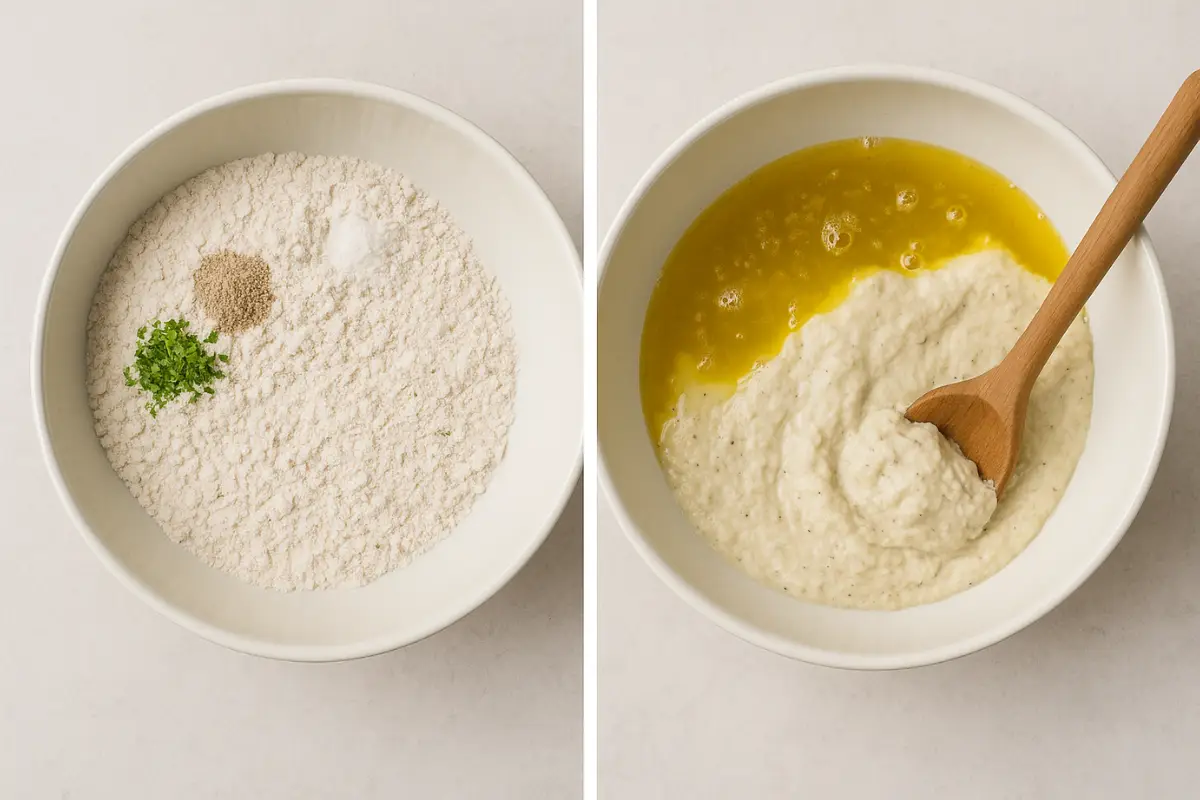
- Let It Rise
Cover the bowl and set it somewhere warm for about 1 hour. You want it to double in size. - Shape the Dough
Place it on parchment paper and gently shape into a loaf. Wet your hands to make this easier.
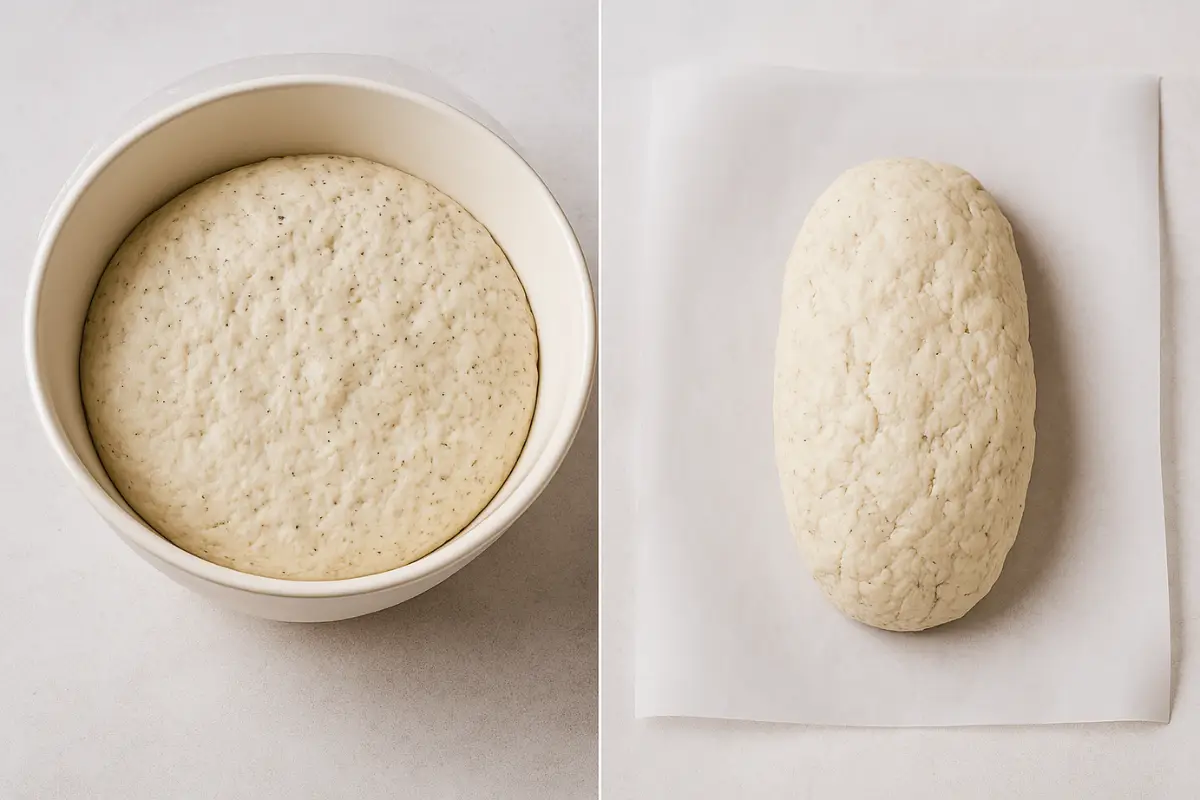
- Second Rise
Let it sit uncovered for 30 minutes while you preheat your oven to 425°F. - Top It (Optional)
Add sesame seeds, rosemary, or flaky salt for extra flair. - Bake
Bake for 35–40 minutes until the crust is golden and it sounds hollow when tapped. - Cool Before Slicing
Let it cool for 30 minutes before slicing—yes, you have to wait. It’s worth it.
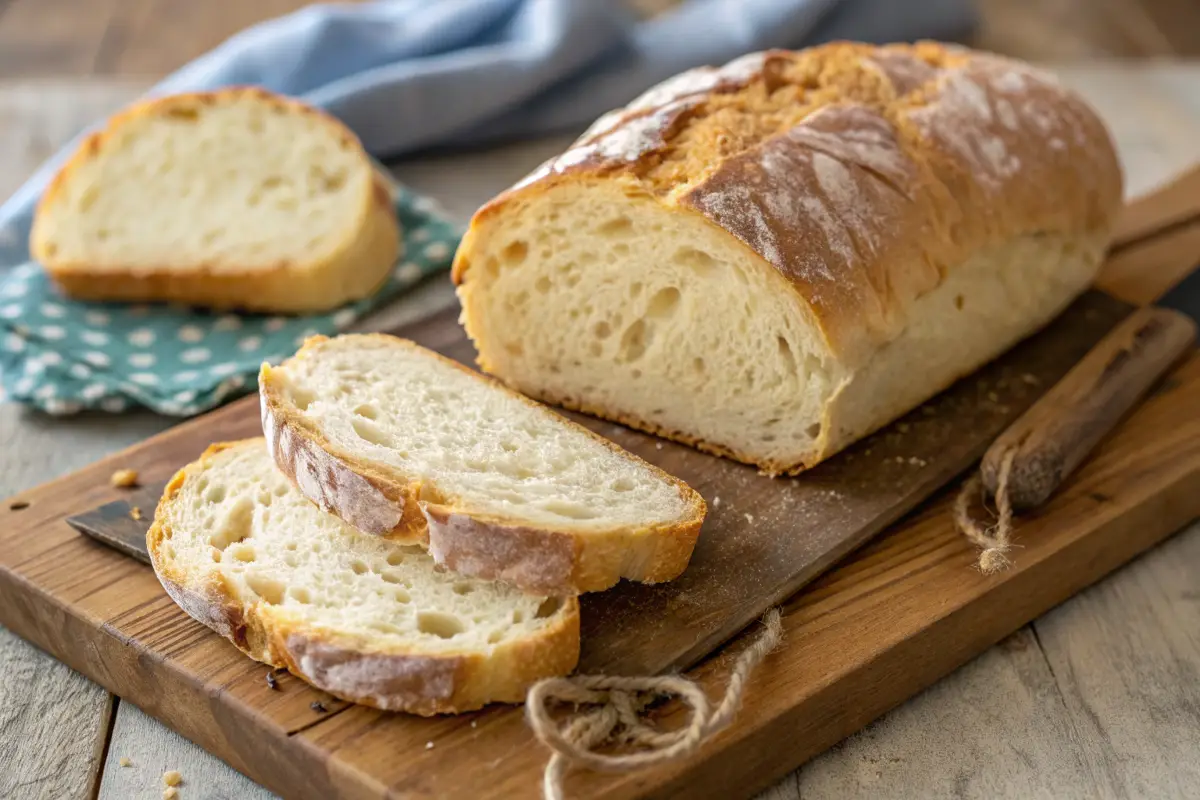
Enhancing Flavor and Texture Like a Pro
You’ve got the base loaf down—now it’s time to elevate it. Because let’s be real, even the best gluten-free bread can sometimes fall a little… flat. These easy tweaks and additions can take your bread from “pretty good” to “wait, this is gluten-free?!”
Add Herbs and Spices
- Toss a teaspoon of Italian seasoning or dried rosemary into your dough for that signature Italian aroma.
- Garlic powder, onion powder, or even a touch of crushed red pepper can give your loaf a savory kick.
- Want a sweeter profile? A dash of cinnamon and honey in the mix works great for breakfast toast.
Pro tip: Fold in chopped sun-dried tomatoes or black olives for a more rustic, artisan-style bread.
Olive Oil = Golden Crust + Flavor
Brushing olive oil over your shaped loaf before baking gives you:
- A soft, golden crust
- A richer flavor
- Extra moisture retention (especially useful for gluten-free doughs that tend to dry out)
Want to get real Italian with it? Infuse the olive oil with garlic, rosemary, or chili flakes first.
Texture Tricks You’ll Thank Me For
- Let it rest overnight: Refrigerating the dough (after the first rise) enhances the flavor and structure.
- Steam it up: Create steam in the oven by placing a pan of hot water on the bottom rack or misting the oven walls right after putting in your dough.
- Use a Dutch oven or baking stone: It holds heat and gives the crust that authentic crunch.
Bread Storage That Actually Works
Gluten-free bread dries out fast, so:
- Store in an airtight bag at room temp for up to 2 days.
- Freeze extra slices with parchment between them and toast straight from frozen.
Want more GF flavor hacks? Try these gluten-free crumbs to boost your savory toppings, or even coat the crust before baking.
Serving Suggestions That Hit Different
You’ve got a golden, crusty loaf of gluten-free Italian bread—now what? Whether you’re going for a simple snack or a full-blown meal, there are so many ways to turn that loaf into something special.
Pair It with Soups and Stews
This bread was basically made to be dunked. Try it with:
- Tomato basil soup
- Creamy roasted garlic potato soup
- A rich, herby beef stew
Feeling cozy? Check out this easy gluten-free sausage lentil soup—it’s a match made in heaven with warm, buttery bread on the side.
Next-Level Sandwiches
Slice your loaf and get creative:
- Classic grilled cheese with GF mozzarella and marinara
- Caprese sandwich with fresh basil and balsamic glaze
- Turkey pesto with spinach and roasted red peppers
And hey, don’t sleep on breakfast: avocado toast with a poached egg? Game-changer.
Dips and Appetizer Vibes
Cut your bread into chunks or strips and serve it with:
- Olive oil + balsamic + cracked pepper
- Homemade hummus or white bean dip
- Warm spinach-artichoke dip
Need something party-friendly? These smiley gluten-free potatoes make a fun, crunchy side to your appetizer tray.
Make It Sweet (Yep, Sweet!)
Hear me out: warm GF bread, a pat of butter, drizzle of honey or jam. Or toast it and turn it into French toast with cinnamon and maple syrup. You’re welcome.
Exploring Regional Variations (Gluten-Free Style)
Italy’s bread game? Iconic. And while most traditional recipes rely heavily on wheat, the good news is you can still recreate that magic without the gluten. Here’s how different regional favorites stack up—and how you can enjoy gluten-free versions at home.
Gluten-Free Ciabatta
Ciabatta is famous for its airy interior and slightly crispy crust. Replicating it gluten-free takes a little finesse, but it’s doable.
What makes it different?
- High hydration dough (think really sticky)
- Quick, hot baking to get those big, beautiful holes
- A neutral, lightly tangy flavor that goes with everything
Tips: Use a stand mixer or electric beater to really whip the dough—this adds air and helps create that open crumb.
For sandwich lovers, this one’s gold. For ideas, see which deli meats are safe and gluten-free before you stack up your ciabatta.
Pane Toscano (Without the Gluten, With the Flavor)
This traditional Tuscan bread is known for being made without salt, which gives it a very mild taste—on purpose. It’s designed to pair with super salty cured meats and cheeses.
How to make it gluten-free:
- Use your base GF flour mix
- Skip the salt in the dough (seriously)
- Serve it with salty prosciutto, pecorino, or a hearty stew
Fun fact: It’s one of the few breads Italians don’t dip in olive oil—it’s meant to be a canvas for bigger flavors.
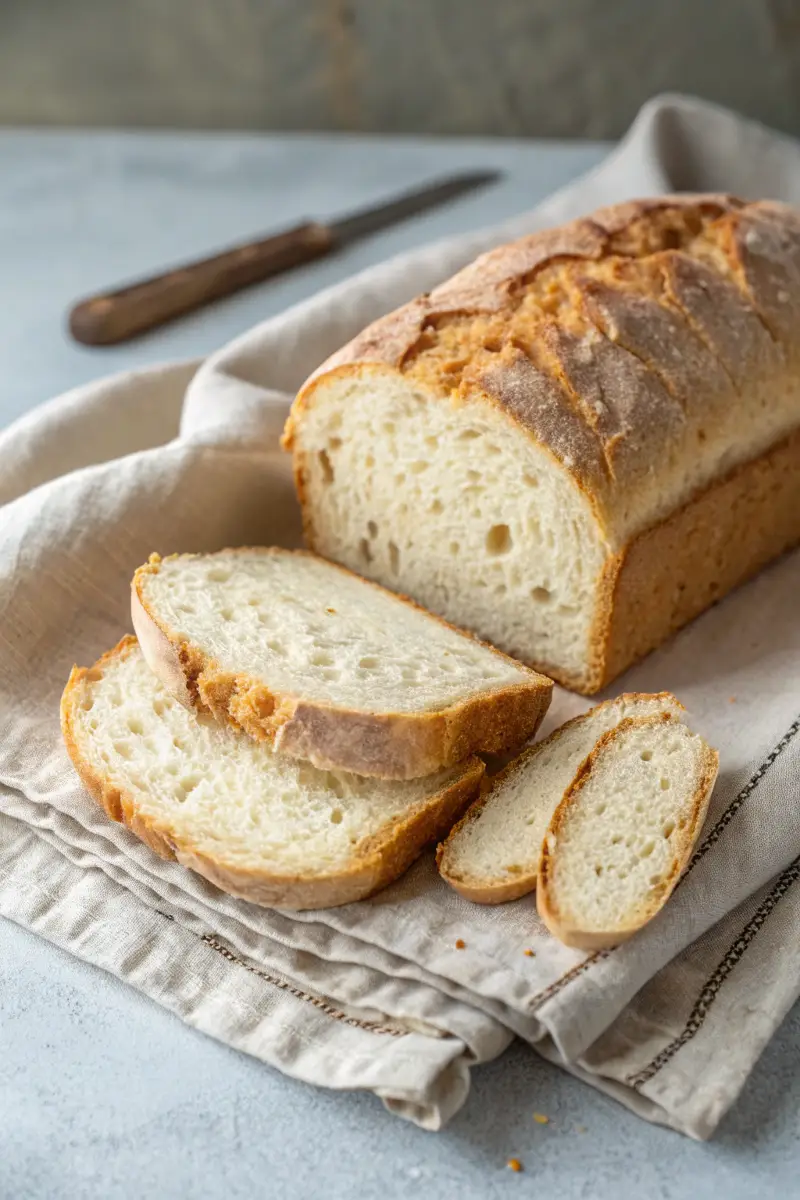
Want more gluten-free Italian comfort food? These easy turkey meatballs would go perfectly with this mild bread.
FAQs About Gluten Free Italian Bread
Yes—absolutely! Whether you’re baking at home or browsing the gluten-free aisle, there are plenty of delicious options out there. From crusty rustic loaves to soft focaccia, gluten-free Italian bread is totally a thing now. And it’s not just edible—it’s actually good.
Most Ezekiel bread is made from sprouted wheat, barley, and spelt—so no, it’s not naturally gluten-free. But some brands are experimenting with gluten-free versions using sprouted lentils, millet, and rice. Just make sure the packaging clearly says “gluten-free,” because traditional Ezekiel won’t cut it for a GF diet.
Oh yeah—gluten-free focaccia is having a moment. You can make it at home with a high-hydration dough (like the one we covered earlier), top it with rosemary, garlic, tomatoes—go wild. And you’ll still get that crispy bottom and pillowy middle.
Need a shortcut? Try this homemade gluten-free focaccia for a foolproof recipe that even non-GF eaters will love.
Yup! Trader Joe’s has multiple gluten-free bread options, including white, multigrain, and some seasonal picks. Their GF white bread is surprisingly soft and perfect for toasting or sandwiches. Plus, it’s affordable—so you’re not spending a fortune to eat better.
Conclusion: Gluten-Free Italian Bread Is the Real Deal
Honestly, gluten-free Italian bread used to feel like a total myth. But now? It’s not only possible—it’s downright delicious. Whether you’re baking a rustic loaf from scratch, loading up on fresh focaccia, or just grabbing a loaf from Trader Joe’s, you’ve got options. Good ones.
The key is experimenting. Try new flour blends. Add herbs. Get bold with toppings. And remember—just because it’s gluten-free doesn’t mean it has to be boring.
Need more gluten-free ideas or daily inspo?
- Follow us on Facebook for new recipes and quick kitchen tips
- Check out our Pinterest boards for meal planning ideas
- See what we’re baking today on Instagram
And hey, if you’re still hungry, don’t miss this recipe for easy gluten-free breakfast casserole—perfect with that fresh-baked bread on the side.
Gluten-free life doesn’t mean giving up flavor. It just means learning how to bake a better loaf—and now, you’ve got everything you need to do it.
Print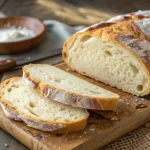
Gluten Free Italian Bread
- Total Time: 1 hour
- Yield: 1 loaf 1x
- Diet: Gluten Free
Description
Rustic, crusty, and soft gluten-free Italian bread that’s perfect for sandwiches, soups, or simply with olive oil and herbs. This loaf delivers all the comfort and flavor without any gluten drama.
Ingredients
- 1 ½ cups white rice flour
- ½ cup tapioca starch
- ½ cup potato starch
- 1 tbsp psyllium husk powder (or 1 ½ tsp xanthan gum)
- 2 ¼ tsp instant yeast
- 1 ½ tsp salt
- 1 ¼ cups warm water (around 110°F)
- 1 tbsp olive oil
- 1 tsp apple cider vinegar
- 1 tsp sugar
- Optional: 1 tsp Italian seasoning
- ½ tsp garlic powder
- Sesame seeds or rosemary for topping
Instructions
- Mix warm water, sugar, and yeast. Let sit for 5–10 minutes until frothy.
- Combine white rice flour, tapioca starch, potato starch, salt, and psyllium husk or xanthan gum in a bowl.
- Stir in the activated yeast mixture, olive oil, and vinegar. Mix until smooth (the dough will be sticky).
- Cover the bowl and let rise in a warm place for 1 hour until doubled in size.
- Place dough on parchment paper and shape into a loaf with wet hands.
- Let it rise uncovered for another 30 minutes while preheating oven to 425°F.
- Top with sesame seeds, rosemary, or flaky salt if desired.
- Bake for 35–40 minutes until golden and sounds hollow when tapped.
- Let cool for 30 minutes before slicing.
Notes
Refrigerating dough after the first rise improves texture. Bake in a Dutch oven for an extra-crusty exterior. Letting the bread cool fully before slicing improves structure.
- Prep Time: 20 minutes
- Cook Time: 40 minutes
- Category: Bread
- Method: Baking
- Cuisine: Italian
Nutrition
- Serving Size: 1 slice
- Calories: 130
- Sugar: 1g
- Sodium: 180mg
- Fat: 3g
- Saturated Fat: 0.5g
- Unsaturated Fat: 2.5g
- Trans Fat: 0g
- Carbohydrates: 24g
- Fiber: 2g
- Protein: 2g
- Cholesterol: 0mg
Keywords: gluten free bread, Italian bread, gluten free baking, gluten free Italian loaf





